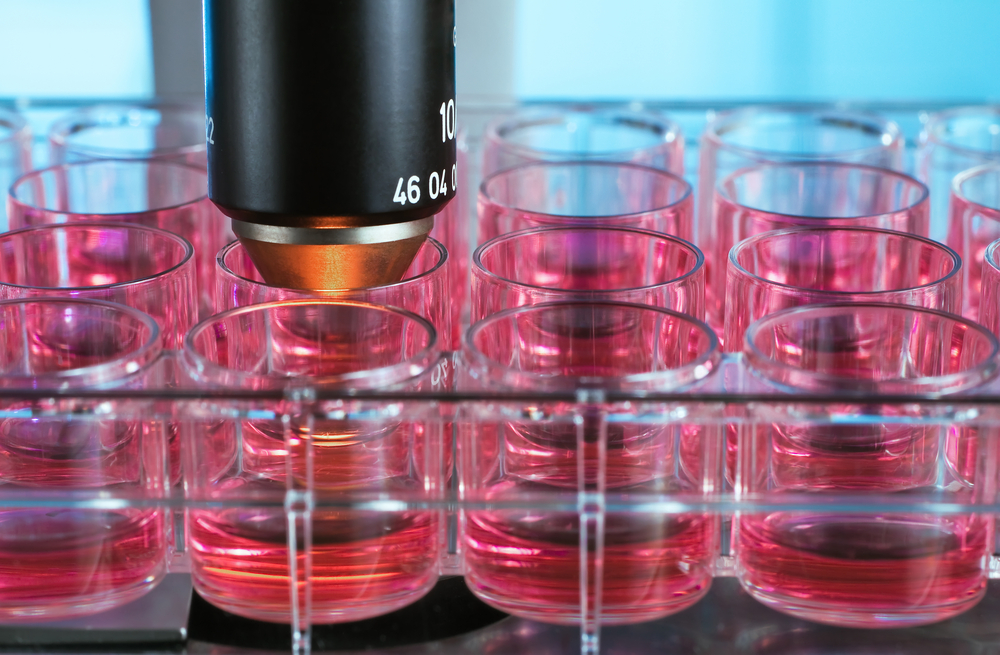Lab-Grown Lung Model Offers Researchers Tool to Investigate and Treat Lung Fibrosis

Researchers have succeeded in growing tiny tissue structures in the lab that mirror the architecture of lungs, creating a model that opens new possibilities for researchers studying pulmonary fibrosis and other lung diseases.
Although the research is still in early stages — with the tissue structures more resembling a fetal, rather than a mature, lung — genetic profiling of the cells will allow researchers to further develop the lung model.
The research team at the Boston University School of Medicine believes that its results will impact not only basic research into lung development, but also enable better tools for modeling diseases and developing drugs and regenerative therapies.
The study, “Prospective isolation of NKX2-1–expressing human lung progenitors derived from pluripotent stem cells,” was published in the Journal of Clinical Investigation.
Researchers currently know little of how human lungs emerge during fetal development, and it’s a limitation with broader implications. For instance, they do not know if the healing of a lung injury in adults involves mechanisms seen during fetal development. This, in turn, prevents the development of successful interventions for lung diseases, such as pulmonary fibrosis.
Part of the problem facing researchers is the difficulty in growing lung cells from so-called induced pluripotent stem cells — skin or blood cells forced to backtrack into stem cells.
The type of stem cells that grow into lungs can also form other organs, and so far, researchers have had difficulties in separating these various types of cells.
The Boston researchers inserted a gene that would emit a fluorescent light when a lung development gene was switched on. In this way, they could select only those cells with an activated “lung development program” for further growth.
They bathed the cells in growth factors and other molecules believed to trigger lung growth. The experiments eventually paid off. Researchers noted that the cells started organizing into spheres that held many of the structures seen in lungs. Scientists call such tiny organ-like structures organoids.
But at that point, the cells only made up the epithelial layer, which lines the inside of the lungs. So the researchers combined the human cells with mesenchymal cells from mice. This allowed them to observe how the human cells started interacting with the mouse cells in ways resembling what is seen in the lungs — further improving their lung model.
Mesenchymal cells are fetal cells that develop into several tissues, including connective tissue, blood, and lymph.
To better understand the development of the lung tissue, they also mapped the activity of all the genes in the cells at various time points, giving them a picture of the cellular events needed for stem cells to grow into lungs.
“We performed a detailed characterization of these lung cells to identify the genes that control lung formation and discovered many genes that confirm conserved gene programs across species but also genes that now require further investigation” Finn Hawkins, an assistant professor of medicine and one of the study’s lead authors, said in a press release.
“We believe this will be very useful to advance our understanding of human lung disease by studying the process in human cells in the laboratory,” Hawkins said.
But the findings are also an important step toward generating new lung tissue for people, Dr. Darrel Kotton — the study’s senior author — pointed out.
“Ultimately this could be used to replace damaged tissue, but there are many short term benefits including testing new treatments on the individuals’ own tissue in the lab before treating the patient directly,” said Kotton, director of the Center for Regenerative Medicine and Seldin Professor of Medicine at Boston University School of Medicine.






